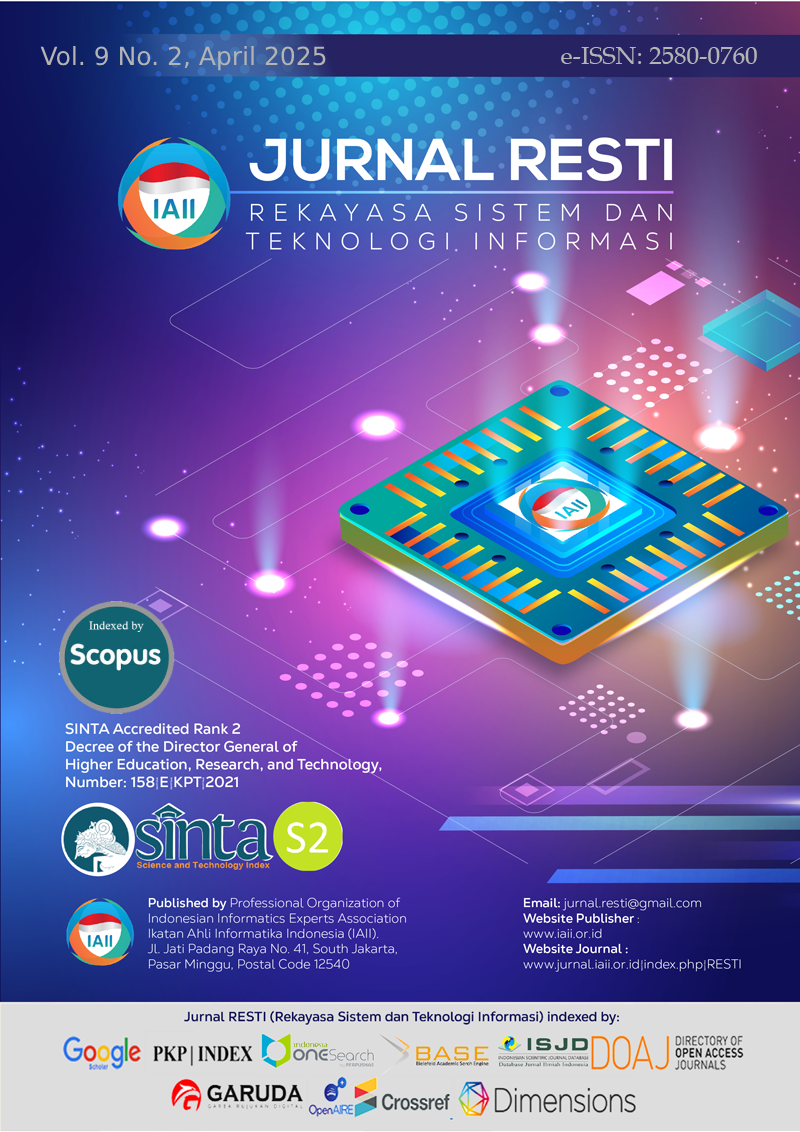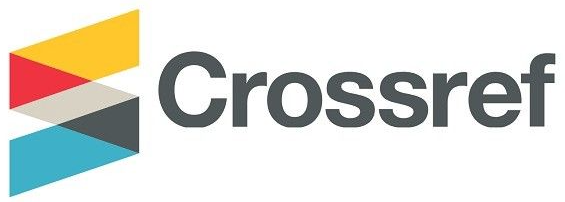Optimizing Multilayer Perceptron for Car Purchase Prediction with GridSearch and Optuna
Abstract
Multilayer Perceptron (MLP) is a powerful machine learning algorithm capable of modeling complex, non-linear relationships, making it suitable for predicting car purchasing power. However, its performance depends on hyperparameter tuning and data quality. This study optimizes MLP performance using GridSearch and Optuna for hyperparameter tuning while addressing data imbalance with the Synthetic Minority Over-sampling Technique (SMOTE). The dataset comprises demographic and financial attributes influencing car purchasing power. Initially, the dataset exhibited class imbalance, which could lead to biased predictions; SMOTE was applied to generate synthetic samples, ensuring a balanced class distribution. Two hyperparameter tuning approaches were implemented: GridSearch, which systematically explores a predefined parameter grid, and Optuna, an adaptive optimization framework utilizing a Bayesian approach. The results show that Optuna achieved the highest accuracy of 95.00% using the Adam optimizer, whereas GridSearch obtained the best accuracy of 94.17% with the RMSProp optimizer, demonstrating Optuna's superior ability to identify optimal hyperparameters. Additionally, SMOTE significantly improved model stability and predictive performance by ensuring adequate class representation. These findings offer insights into best practices for optimizing MLP in predictive modeling. The combination of SMOTE and advanced hyperparameter tuning techniques is applicable to various domains requiring accurate predictive analytics, such as finance, healthcare, and marketing. Future research can explore alternative optimization algorithms and data augmentation techniques to further enhance model robustness and accuracy.
Downloads
References
M. Iqbal, M. N. Hendri, M. R. Ramadhan Saelan, M. Sony Maulana, Yudhistira, and A. Mustopa, “Optimasi Hyperparameter Multilayer Perceptron Untuk Prediksi Daya Beli Mobil,” J. Manaj. Inform. dan Sist. Inf., vol. 6, no. 1, pp. 73–81, 2023, doi: 10.36595/misi.v6i1.739.
M. N. Afkar, D. T. Randa, and R. A. Saputra, “Prediksi Penjualan Mobil Toyota Di Indonesia Menggunakan Multi-Layer Perceptron,” J. Inform. Polinema, pp. 91–98, 2024.
K. H. Suradiradja, “Algoritme Machine Learning Multi-Layer Perceptron dan Recurrent Neural Network untuk Prediksi Harga Cabai Merah Besar di Kota Tangerang,” Fakt. Exacta, vol. 14, no. 4, pp. 194–205, 2021, doi: 10.30998/faktorexacta.v14i4.10376.
M. Wahyuni, “Klasifikasi Penyakit Daun Tomat dengan Perbandingan Fungsi Aktivasi Multi Layer Perceptron,” Minfo Polgan, vol. 13, no. 2, pp. 1988–1998, 2024, doi: https://doi.org/10.33395/jmp.vl3i2.14351.
Z. N. Nugroho, A. Harjoko, and M. Auzan, “Klasifikasi Eritrosit Pada Thalasemia Minor Menggunakan Fitur Konvolusi dan Multi-Layer Perceptron,” Indones. J. Electron. Instrum. Syst., vol. 13, no. 1, pp. 91–100, 2023, doi: 10.22146/ijeis.83473.
L. A. Zahir and S. Mafiroh, “Metode Multi Layer Perceptron (Optimization Of Concrete Compressive Strength With Artificial Neural Networks Using Multi Layer Perceptron),” Tek. Sipil Univ. Tulungagung, vol. 4, no. 1, pp. 45–55, 2024.
P. I. Ashuri, I. A. Cahyani, and C. S. K. Aditya, “MIND (Multimedia Artificial Intelligent Networking Database) Klasifikasi Penyakit Stunting Menggunakan Algoritma Multi-Layer Perceptron,” Multimed. Artif. Intell. Netw. Database, vol. 9, no. 1, pp. 52–63, 2024, doi: 10.26760/mindjournal.v9i1.52-63.
D. Dablain, B. Krawczyk, and N. V. Chawla, “DeepSMOTE: Fusing Deep Learning and SMOTE for Imbalanced Data,” IEEE Trans. Neural Networks Learn. Syst., vol. 34, no. 9, pp. 6390–6404, 2023, doi: 10.1109/TNNLS.2021.3136503.
A. Ranggana, R. C. Putra, and W. Wahyudin, “Multilayer Perceptrons Dalam Memprediksi Kemenangan Pertandingan Sepak Bola UEFA EURO 2016,” Digit. Transform. Technol., vol. 3, no. 2, pp. 629–642, 2023, doi: 10.47709/digitech.v3i2.3123.
L. Camacho, G. Douzas, and F. Bacao, “Geometric SMOTE for regression,” Expert Syst. Appl., vol. 193, p. 116387, 2022, doi: 10.1016/j.eswa.2021.116387.
M. R. Aohana, F. Bimantoro, R. N. L. Hidhayah, and D. Swanjaya, “Komparasi Algoritma MLP+LBP dan CNN Sebagai solusi Inovatif Untuk Deteksi Dini Korosi,” in Seminar Nasional Inovasi Teknologi, Kediri, 2024, pp. 528–536. [Online]. Available: https://proceeding.unpkediri.ac.id/index.php/inotek/
D. Wintana, Gunawan, H. Sulaeman, and S. Bahri, “Penerapan Multi Layer Perceptron dan Diskrit pada Prediksi Cacat Software,” J. Inf. Technol., pp. 321–329, 2022.
S. Gabriel, “Cars - Purchase Decision Dataset,” 2022, Kaggle. [Online]. Available: https://www.kaggle.com/datasets/gabrielsantello/cars-purchase-decision-dataset
D. Mardinah and M. Thoriq, “Algoritma Multi Layer Perceptron sebagai Prediksi Kelulusan Mahasiswa Universitas Adzkia Tepat Waktu berdasarkan jenis kelamin , Indeks Prestasi Semester , dan Jumlah SKS,” J. Technol. Comput., vol. 1, no. 2, pp. 26–35, 2024, [Online]. Available: https://http//ojs.adzkia.ac.id/index.php/jtech
F. Penalun, A. Hermawan, D. Avianto, and A. Pramudwiatmoko, “A Multi-Layer Perceptron Regression and Variant Windowing for Estimating Rainfall Based on Weather Radar Data,” J. Educ. Sci., vol. 33, no. 2, pp. 58–71, 2024, doi: 10.33899/edusj.2024.146355.1421.
A. Gupta, R. Ramanath, J. Shi, and S. S. Keerthi, “Adam vs. SGD: Closing the generalization gap on image classification,” in OPT2021: 13th Annual Workshop on Optimization for Machine Learning, 2021, pp. 1–7.
Y. Elor and H. Averbuch-Elor, “To SMOTE, or not to SMOTE?,” Proc. ACM Int. Conf. Inf. Knowl. Manag., vol. 1, no. 1, 2022, [Online]. Available: http://arxiv.org/abs/2201.08528
M. M. Ahsan, M. S. Ali, and Z. Siddique, “Imbalanced Class Data Performance Evaluation and Improvement using Novel Generative Adversarial Network-based Approach: SSG and GBO,” no. Ml, pp. 1–13, 2022, [Online]. Available: http://arxiv.org/abs/2210.12870
J. H. Joloudari, A. Marefat, M. A. Nematollahi, S. S. Oyelere, and S. Hussain, “Effective Class-Imbalance Learning Based on SMOTE and Convolutional Neural Networks,” Appl. Sci., vol. 13, no. 6, pp. 1–43, 2023, doi: 10.3390/app13064006.
S. Wang, Y. Dai, J. Shen, and J. Xuan, “Research on expansion and classification of imbalanced data based on SMOTE algorithm,” Sci. Rep., vol. 11, no. 1, pp. 1–11, 2021, doi: 10.1038/s41598-021-03430-5.
J. Taylor, W. Wang, B. Bala, and T. Bednarz, “Optimizing the optimizer for data driven deep neural networks and physics informed neural networks,” 2022, [Online]. Available: http://arxiv.org/abs/2205.07430
M. Juez-Gil, Á. Arnaiz-González, J. J. Rodríguez, C. López-Nozal, and C. García-Osorio, “Approx-SMOTE: Fast SMOTE for Big Data on Apache Spark,” Neurocomputing, vol. 464, pp. 432–437, 2021, doi: 10.1016/j.neucom.2021.08.086.
N. K. C. Pratiwi, N. Ibrahim, and S. Saidah, “Prediksi Kanker Paru menggunakan Grid search untuk Optimasi Hyperparameter pada Algoritma MLP dan Logistic Regression,” J. Tek. Energi Elektr. Tek. Telekomun. Tek. Elektron., vol. 12, no. 3, p. 556, 2024, doi: 10.26760/elkomika.v12i3.556.
B. Fu et al., “Quantifying scattering characteristics of mangrove species from Optuna-based optimal machine learning classification using multi-scale feature selection and SAR image time series,” Int. J. Appl. Earth Obs. Geoinf., vol. 122, p. 103446, 2023, doi: 10.1016/j.jag.2023.103446.
W. A. G. Kodri and S. Hadianti, “Optimization of The Machine Learning Approach using Optuna in Heart Disease Prediction,” J. Med. Informatics Technol., vol. 1, no. 3, pp. 59–64, 2023, doi: 10.37034/medinftech.v1i3.15.
Copyright (c) 2025 Jurnal RESTI (Rekayasa Sistem dan Teknologi Informasi)

This work is licensed under a Creative Commons Attribution 4.0 International License.
Copyright in each article belongs to the author
- The author acknowledges that the RESTI Journal (System Engineering and Information Technology) is the first publisher to publish with a license Creative Commons Attribution 4.0 International License.
- Authors can enter writing separately, arrange the non-exclusive distribution of manuscripts that have been published in this journal into other versions (eg sent to the author's institutional repository, publication in a book, etc.), by acknowledging that the manuscript has been published for the first time in the RESTI (Rekayasa Sistem dan Teknologi Informasi) journal ;







